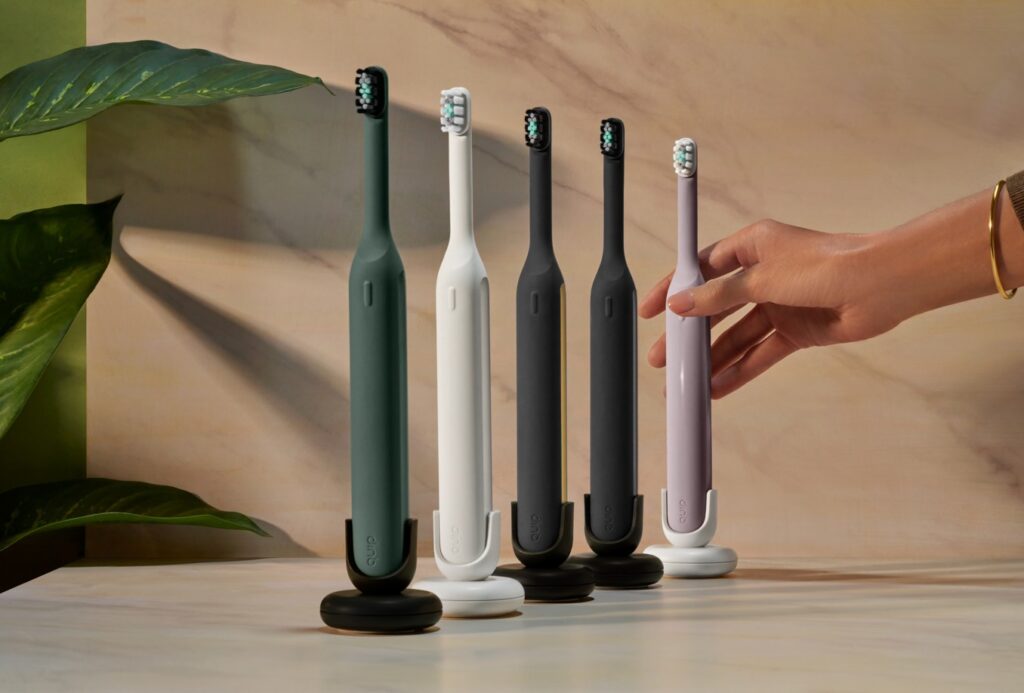Toothbrush brand Quip better tracks and remarkets to customers after implementing QR codes on its packaging.
Like most direct-to-consumer brands, oral care brand Quip struggled to gain insights into shoppers who purchased its products at a retail store.
Quip launched in 2015 as a direct-to-consumer electric toothbrush brand, coupled with a subscription service for shoppers to receive regular replacements for their toothbrush heads. In 2018, it expanded sales beyond its website, and today more than 15,000 retail locations sell its products, including online and in stores at Target, Walmart, Amazon, CVS and regional grocery chains.
This type of retail penetration is excellent for sales growth and brand recognition, but can be cumbersome to connect and remarket to customers.

“When you have direct to consumer, everyone knows that you get that data, you can talk to them,” said Meredith Glansberg, chief revenue officer at Quip. “But if you buy through Walmart, you’re losing for the most part that ability to speak to them in the future and to really get them to communicate with you on a health level, on a business level, any certain way.”
Recurring revenue is crucial for Quip
For Quip, a customer relationship is critical for revenue growth. The American Dental Association recommends consumers change their toothbrush head every three to four months. This refill purchase is valuable revenue for Quip, and a purchase that most shoppers make sporadically. Brush refills is a “very large and growing” share of Quip’s revenue, Glansberg said without reveling the exact rate.
The brand knows shoppers are not replacing their toothbrushes as often as they should, hence why Quip launched with a subscription program. And this is what makes a communication channel to customers so important. Quip built its own solution to track shopper data but it was “very proprietary, very labor and cost intensive to manage on our end,” Glansberg said.
Plus, Quip was replatforming to Shopify and it couldn’t bring its old system with it.
Finding a new omnichannel customer relationship management platform
At a conference in 2024, Glansberg learned about omnichannel data platform Brij, which uses QR codes within packaging to prompt customers to share their email address and thus begin remarketing opportunities. After learning about Brij in June 2024, Quip implemented the solution and had it live by the 2024 holiday season, Glansberg said.
Quip incentives shoppers to share their email address to activate their warranty and to receive discounts. Once it has the shopper’s email address, Quip will then start sending personalized messages. For example, if the shopper made their initial purchase at Target, Quip could email the shopper three months later when it’s time to buy the four-pack refill option at Target, or encourage the shopper to sign up for a subscription from its own website.
“How do we make sure that we know where people shop and are able to really personalize solutions for them based on their shopping behaviors and what works for them as consumers,” Glansberg said.
The Brij platform also integrates with its ecommerce platform Shopify, its email service provider Klaviyo and with its Meta ads, so Quip can easily funnel the insights into wherever it needs to identify shoppers.
Quip identifies 25% more customers
Before Brij, Quip provided a similar QR code for a discount exchange, but often the code did not automatically populate on the shopping cart page and shoppers had to key in the unique number.
“Before we were spending a lot of time just making the infrastructure work versus thinking about the now, how can we improve? How can we speak to people better?” Glansberg said.
Since implementing Brij’s QR codes, the number of shoppers providing Quip with their email address has increased about 25%, Glandsberg said. Less than a quarter of shoppers have provided Quip with their email address, but she says the redemption rate is much higher than a typical coupon at retail.
“It continues to grow as we build those more personalized experiences and ensure that our flows, what we do with the data is as personalized and unique and really meaningful and resonant to the shopper as possible,” Glansberg said.
Within the first week of implementing Brij, 65% of consumers who scanned the QR code went on to give Quip their email address.

 Network
Network

